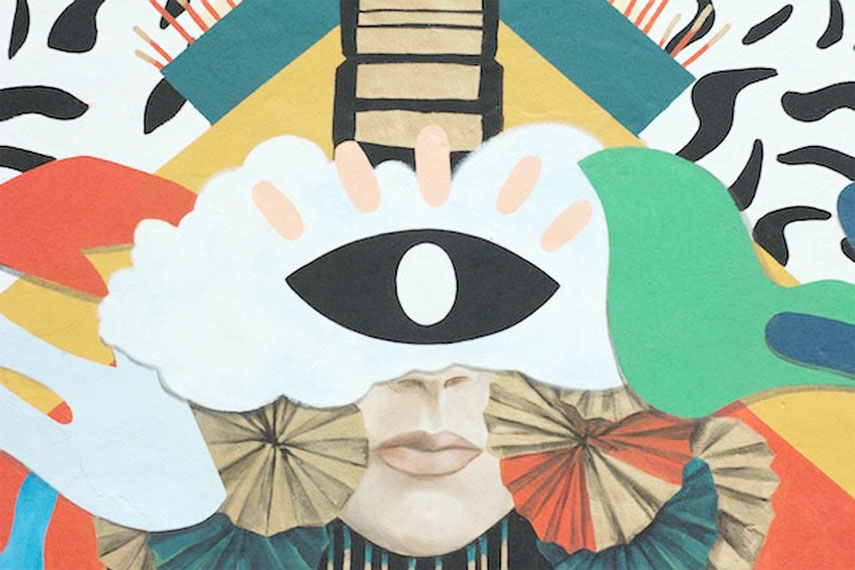
Shahram Heshmat :
The term aesthetics can be defined as the perception, interpretation, and appreciation of beauty. In the presence of beautiful things, we feel a broad range of emotions, such as fascination, awe, wonder, and admiration.
Aesthetic experiences can arise from the appreciation of human artifacts, such as artworks (e.g., music, poetry, sculpture, and visual arts) or natural objects like sunsets or mountain scenes. Aesthetic experience is emotionally positive and rewarding. For instance, natural scenes like sunrises and sunsets tend to produce positive feelings of peacefulness, relaxation, and harmony.
Aesthetics is not the same as art. Art refers to a process of doing or making, while aesthetics refers to the consumer’s viewpoint.
Here are five key features of the aesthetic pleasure (or perceived beauty) of everyday life experiences.
1. Interest in the experience for its own sake. Aesthetic pleasures are typically pursued and enjoyed for their own sake. The focus is on the pleasure that arises from the act of doing something rather than achieving some ultimate personal goal. We appreciate beautiful things not for their practical purposes (utility) only, but also for what they are in themselves. For example, we often go to botanical gardens or to music performances with the expectation of experiencing emotional uplift. We look at a painting to enjoy its beauty. However, it is difficult to separate the content of a work of art from its form. What is beautiful seems interesting, good, and useful.
2. Beauty and judgment. Beauty in the eye of the beholder. That is, we apply our knowledge of the world to interpret what we see. People disagree about much of what they find beautiful or ugly: You might like Mozart, but your friend likes U2. However, things are not that simple. Aesthetic taste is rooted in a broader cultural context. People rely on their social networks in making judgments that something is cool. For example, people used to prefer clean-shaved men. But now men with beards are accepted as mainstream. Judgments of facial beauty, music, and clothing are influenced by social conformity pressure.
3. The beauty in simplicity. There is a beauty in simplifying because people prefer things that are easy to think about. For example, when a complex idea is presented in an accessible way, it creates a particularly strong experience of aesthetic pleasure. Familiar stimuli are processed faster than novel stimuli. For example, the more listeners hear a piece of music, the more they like it. This also suggests that aesthetic pleasure can depend on satisfactorily mastering the stimulus. For example, we can learn to like classical music by gaining more knowledge about it.
4. Ambience. The atmosphere or ambiance of a certain situation contributes to the aesthetic experience. In our daily life we can experience a given atmosphere or ambiance as tense or relaxed, cheerful or gloomy, and so on. We appreciate the way in which various elements come together to influence the aesthetic experience: Flowers in a room add to its expressiveness when they harmonize with its furniture. Part of what determines the ambiance or atmosphere is human interactions. For example, Trader Joe’s (an American chain of grocery stores) presents a warm and friendly atmosphere as indicated in the workers’ tone of voice, facial expressions, and approachable body language.
5. Being moved by beauty. Aesthetic pleasure motivates prolonged and repeat experiences: You never get tired of watching a beautiful sunset. We tend to protect or purchase things with an aesthetic appeal or try to maintain their aesthetic value. We feel awe through engaging with nature, or enjoying great art, music, or superb athletic performance. The experience of awe can make us feel diminished and insignificant. As our sense of self shrinks, so do our worries. The experience of awe lifts us out of the ordinary practical thoughts that dominate our daily lives.
How can we improve our aesthetic attitude?
The power of aesthetics can be used to improve the quality of life. Our preoccupation with our daily habitual experience masks the aesthetic potential of ordinary objects and routine activities. The most important factor for everyday aesthetics is the typical attitude we take toward them. Once we experience them with a different attitude, we can discover their hidden aesthetic values. This means learning to appreciate the mundane activities in our daily life as extraordinary. Aesthetic living means taking a genuine interest in all details of daily life (mindful living). Being aware and paying attention is a prerequisite for any kind of aesthetic experience, whatever the content.
(Shahram Heshmat, Ph.D., is an associate professor emeritus of health economics of addiction at the University of Illinois at Springfield).

